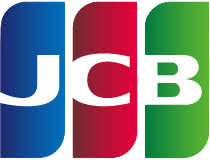Introduction: Why Egypt Is the Perfect Classroom for Young Travelers

Educational Adventures in Egypt, Egypt is a living textbook — a place where ancient history, breathtaking nature, and modern culture meet. For school groups and student travelers, it’s not only a dream destination but also a dynamic educational environment. Lessons from the classroom come alive as students walk among the pyramids, snorkel over coral reefs, or wander through Cairo’s bustling streets.
Whether your focus is history, biology, geography, or art, Egypt delivers knowledge through experience. Students can dive into marine life in the Red Sea, uncover the secrets of ancient pharaohs, or participate in local workshops that connect them to centuries-old traditions.
This guide explores how educational tours in Egypt combine discovery, safety, and fun — providing young travelers with lessons that last a lifetime.
1. The Educational Value of Student Travel in Egypt

Learning while traveling is one of the most powerful ways to understand the world. Egypt’s natural and cultural diversity makes it ideal for turning education into adventure.
1.1. History and Civilization
Few destinations allow students to experience history as vividly as Egypt. The Great Pyramids, the Sphinx, and the temples of Luxor offer a real-world connection to lessons about ancient engineering and art. Instead of reading about hieroglyphs, students can trace them with their own hands, guided by Egyptologists who explain the stories carved in stone.
1.2. Marine Biology and Ecology
Under the surface of the Red Sea lies a vibrant marine world. Snorkeling sessions and marine biology classes teach students about coral reefs, sustainable tourism, and endangered species such as turtles and dolphins. These practical lessons inspire environmental awareness that no textbook can match.
1.3. Geography and Geology
Deserts, oases, and mountain landscapes make Egypt a playground for geographers. Young explorers can study how natural forces shape the land while hiking through canyons or visiting the dramatic Eastern Desert. Each location brings geology and climate studies to life.
1.4. Cultural and Social Learning
The journey goes beyond sightseeing. Cultural immersion through music, handicrafts, Bedouin customs, and local cuisine gives students insight into Egyptian daily life. Participating in these activities builds empathy, curiosity, and respect for diversity.
2. Best Destinations for School and Youth Excursions

2.1. Cairo – The Dynamic Capital of Learning
Cairo is an exciting mix of ancient heritage and modern energy. Students discover layers of history while engaging in hands-on learning experiences.
Educational Highlights:
- The Egyptian Museum introduces thousands of ancient artifacts and offers context for lessons in archaeology and art.
- The Grand Egyptian Museum near Giza combines technology with history, providing interactive exhibits ideal for school tours.
- Walking through Islamic Cairo allows groups to explore mosques, markets, and traditional architecture.
- Coptic Cairo offers another perspective, revealing Egypt’s Christian heritage.
Fun and Safe Activities:
Students can take felucca rides on the Nile, try local cooking classes, or join cultural exchange workshops with Egyptian peers.
2.2. Giza – Where Ancient Wonders Come Alive
Standing before the pyramids inspires awe and curiosity. It’s the perfect setting to learn about mathematics, engineering, and ancient design.
Guided tours explain how massive stone structures were built thousands of years ago, while hieroglyphic workshops encourage creativity. Photography lessons at the Giza Plateau help students capture history through their own lens. To ensure comfort, visits are best scheduled early in the morning before the midday heat.
2.3. Luxor and Aswan – The Open-Air History Book
Luxor, often called the world’s greatest open-air museum, is a paradise for history lovers. Students encounter living evidence of the New Kingdom era at every turn.
At Karnak Temple, guides explain how art and religion intertwined in ancient society. In the Valley of the Kings, they descend into painted tombs that reveal stories of the afterlife. A Nile cruise between Luxor and Aswan transforms geography lessons into real observation of landscapes and human settlement along the river.
Aswan adds a modern dimension. Visiting the High Dam demonstrates how technology and environmental management affect daily life — connecting ancient history with contemporary science.
2.4. Hurghada – Where Education Meets the Sea
Hurghada offers one of the safest environments for youth travel in Egypt. The resort’s calm waters and professional dive centers make it ideal for introducing students to the underwater world.
Snorkeling classes teach water safety, coral identification, and eco-friendly practices. Marine biology centers explain how to protect fragile ecosystems. In addition, students can join glass-bottom boat tours, take part in beach clean-ups, or enjoy team-building games by the shore.
For those over 16, supervised quad tours into the desert create excitement while reinforcing lessons about geography and survival in extreme climates.
2.5. Marsa Alam – Nature’s Peaceful Classroom
South of Hurghada lies Marsa Alam, a quieter destination perfect for smaller student groups or eco-education programs. Here, marine conservation takes center stage.
At Abu Dabbab Bay, students may observe sea turtles and dugongs in their natural habitat. Educational excursions explain the importance of coral reefs for biodiversity. Desert tours introduce the geology of ancient rock formations, and night sessions under clear skies encourage astronomy learning.
The combination of peace, safety, and nature makes Marsa Alam a model site for responsible youth travel.
2.6. Alexandria – The City of Knowledge
Known for its legendary ancient library, Alexandria remains a symbol of learning and cultural exchange.
At the Bibliotheca Alexandrina, students explore exhibitions on science, art, and global knowledge. The National Museum presents Egypt’s Greco-Roman heritage, while Fort Qaitbay offers insights into maritime history and architecture.
Afternoon walks along the Corniche or group photo challenges add a creative touch to the academic experience.
3. Combining Learning and Adventure

Educational travel succeeds when students not only absorb knowledge but also enjoy the process. Egypt provides endless opportunities to balance structured lessons with discovery.
3.1. Engaging Activities for Students
Hands-on workshops bring theory to life. Pottery, papyrus, and calligraphy classes teach patience and craftsmanship. Culinary sessions reveal how regional ingredients shape Egyptian identity. Basic Arabic language games encourage communication and confidence.
3.2. Outdoor Adventures
Desert safaris combine geography with teamwork, as students navigate dunes and learn about adaptation to extreme conditions. Kayaking or sailing sessions promote cooperation and environmental awareness. Eco-projects, such as reef protection and beach clean-ups, foster responsibility and global thinking.
3.3. Wellness and Sports
Balancing study with recreation keeps energy high. Morning yoga, beach volleyball, or friendly football matches strengthen group spirit while promoting health.
4. Safety and Organization – The Foundation of Every Successful Trip

A great youth trip depends on meticulous planning and reliable partners. Egypt’s main resorts and tourist areas maintain excellent safety standards for visiting students.
4.1. Transport and Logistics
Always choose licensed vehicles with professional drivers. Air-conditioned buses, seatbelts, and planned rest stops guarantee comfort. Organizers should verify all transport providers and ensure every journey has a clear itinerary.
4.2. Accommodation
Hotels that cater to families and school groups offer the right balance of security and amenities. Reception staff and on-site medical assistance are available in most tourist resorts. Shared areas like pools or gardens provide safe spaces for evening activities.
4.3. Health and Hydration
Egypt’s climate demands careful hydration. Students should drink bottled water, use sunscreen, and wear hats during outdoor excursions. Teachers and guides can include short breaks to maintain focus and comfort.
4.4. Certified Guides and Instructors
Each educational or adventure activity — whether snorkeling, desert touring, or museum visits — should be led by licensed professionals. Many guides speak multiple languages and specialize in youth education, making learning both safe and engaging.
5. Sample 5-Day Student Itinerary

Day 1: Welcome to Cairo
Arrival and transfer to the hotel. After orientation, a cultural dinner introduces Egyptian flavors and customs.
Day 2: Exploring Cairo and Giza
Morning visit to the Egyptian Museum followed by a guided tour of the Pyramids. In the evening, a relaxing Nile felucca ride provides a perfect end to the day.
Day 3: Journey to Luxor
Travel to Luxor by flight or train. Students explore the Karnak Temple and join an interactive quiz on ancient mythology.
Day 4: Hurghada Marine Discovery
After a scenic drive, snorkeling classes and marine biology sessions fill the day. A beach barbecue encourages reflection and group bonding.
Day 5: Cultural Wrap-Up
Visits to local markets and art centers before returning to Cairo for departure.
This itinerary balances learning, leisure, and safety — the ideal combination for school and youth travel.
6. Why Educational Tours in Egypt Inspire Students

6.1. Deep Learning Through Experience
Standing inside ancient temples or floating above coral reefs transforms understanding into memory. Students not only learn facts but also feel the story behind them.
6.2. Personal Growth
Travel builds independence, teamwork, and adaptability. Facing new situations away from home teaches resilience and social awareness.
6.3. Cultural Understanding
Interactions with Egyptian communities break stereotypes and encourage global friendship. Shared meals, music, and laughter create connections that last long after the trip ends.
6.4. Motivation for Future Study
Many students return from Egypt inspired to pursue careers in archaeology, marine biology, or international relations. The trip plants seeds of curiosity that continue to grow.
7. Best Seasons for Youth and Student Travel
The ideal time for school and student trips to Egypt is from October to April. During these months, temperatures are pleasant, the skies are clear, and outdoor exploration is comfortable.
Summer can be hot, especially in southern regions, so spring and winter provide better conditions for learning activities and physical excursions.
8. What to Pack for a Student Trip
- Lightweight clothing and comfortable shoes
- Sunscreen, hat, and sunglasses
- Reusable water bottle
- Swimwear for Red Sea activities
- Notebook or sketchpad for lessons
- Light jacket for evenings
- First aid essentials
Proper packing ensures safety, comfort, and readiness for any activity.
9. Making Every Experience Meaningful

Reflection turns travel into true education. Encourage students to keep journals, draw what they see, or create mini-presentations about their discoveries. Evening group discussions strengthen friendships and allow everyone to share highlights of the day.
Photography and storytelling contests can make learning fun while helping students express their impressions creatively.
10. Conclusion: Egypt – A Journey That Teaches for Life

Educational Adventures in Egypt, For young travelers, Egypt is not just another destination. It is a vibrant classroom filled with history, science, art, and human connection. Every temple, coral reef, and desert dune becomes a page in a story that students write for themselves.
Organized educational tours in Egypt combine safety, culture, and inspiration. Students return home with knowledge, confidence, and unforgettable memories — proof that learning through travel is the most powerful lesson of all.







